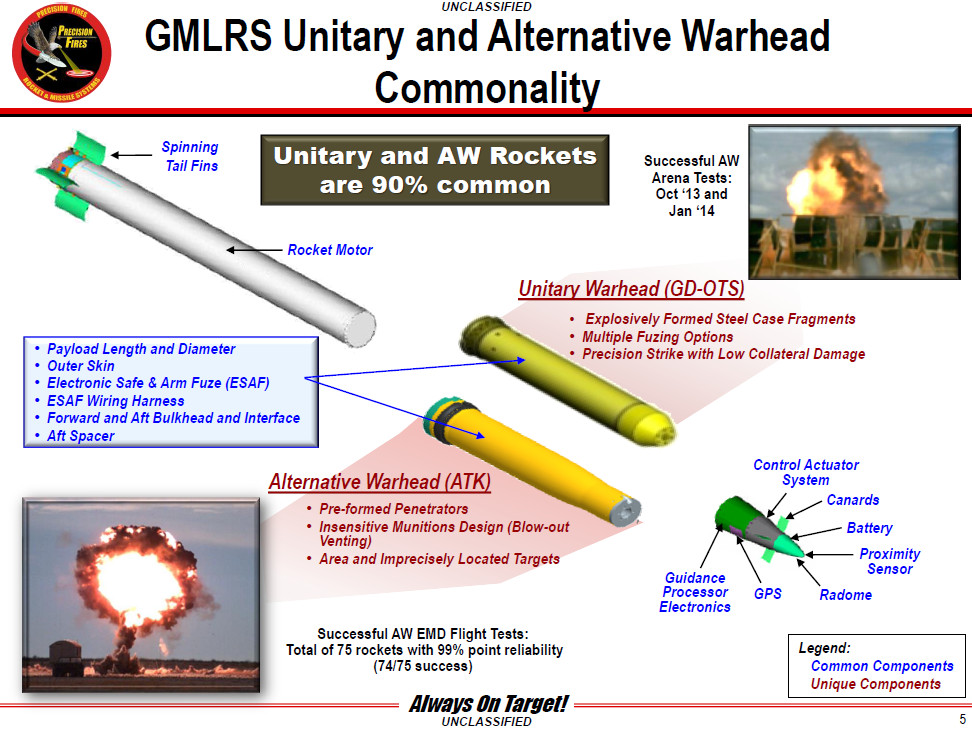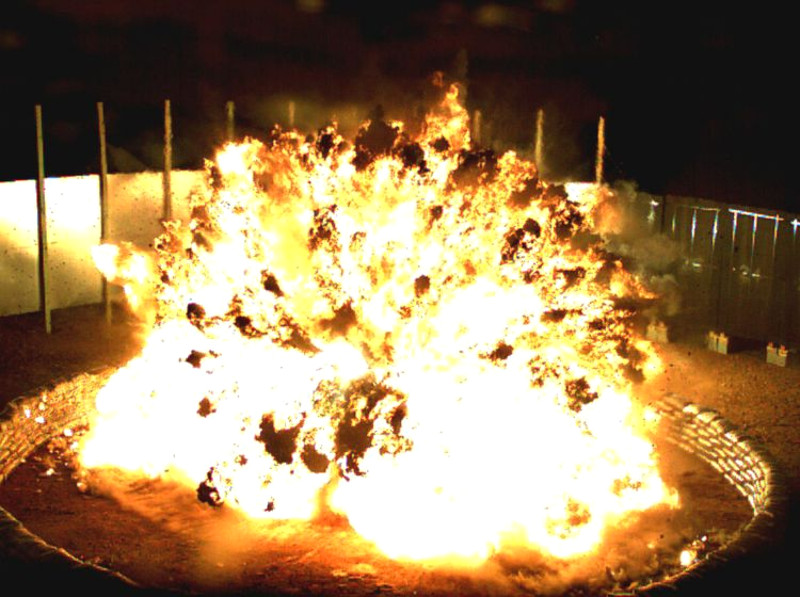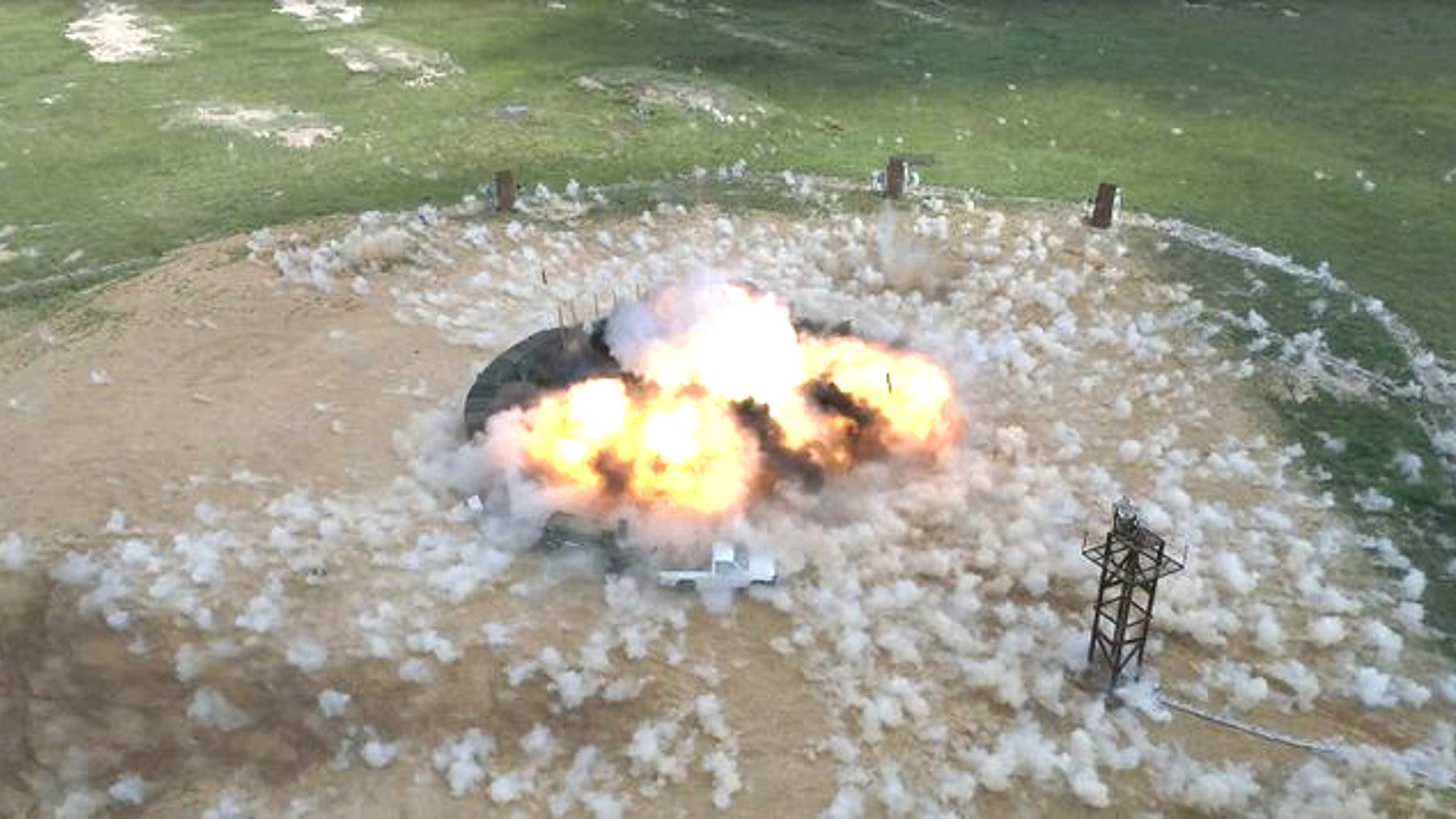The U.S. military as a whole is pushing ahead as fast as I can to field hypersonic weapons, with it recently emerging that the U.S. Air Force, Army, and Navy were cooperating on the development of a single boost-glide vehicle design. But while there’s been much discussion about hypersonic vehicle shapes, as well as the means of accelerating them to five times the speed of sound or more, there’s been less public attention given to what sorts of warheads they might actually carry. Earlier in 2018, Northrop Grumman demonstrated a 50-pound design that it says could work particularly well with this new class of weapons.
In March 2018, the Virginia-headquartered defense contractor showed off the warhead at a testing facility belonging to Energetic Materials and & Products, Inc. (EMPI) in Burnet, Texas to unnamed prospective customers working on unspecified hypersonic weapons, which Jane’s 360 was first to report. A second test of the warhead, which uses Northrop Grumman’s Lethality Enhanced Ordnance (LEO) technology, occurred testing firm NTS’ site in Camden, Arkansas in August 2018.
“LEO is a fairly generic technology: PBXN-110 explosive fill and fragmentation layer,” Pat Nolan, the Vice President and General Manager of Northrop Grumman’s Missile Products division, told Jane’s earlier in October 2018. “It’s how we array those fragments that determines the desired effects.”
Northrop Grumman says it can scale the size and arrangement of the fragments, coupled with air-bursting fuzes, to be as lethal as possible against specific target sets, including exposed personnel, light and medium vehicles, parked aircraft, radar dishes, and more. The company uses extensive computer modeling to determine the most optimal configuration depending on the requirements.

Orbital ATK, which Northrop Grumman purchased in June 2018, began testing what it originally called Alternative Warhead (AW) technology in 2013 for the U.S. Army. At the time, that service’s primary focus was the development of a substitute warhead for the 227mm Guided Multiple Launch Rocket System (GMLRS) artillery rocket.
That weapon had previously come with a cluster munitions warhead full of more than 400 small submunitions. In 2008, President George W. Bush’s Secretary of Defense Robert Gates had instituted a plan to begin removing this and other types of cluster munitions from U.S. military inventory and develop more reliable alternatives that were less likely to leave unexploded ordnance scattered around the battlefield, which presented risks to friendly troops and innocent bystanders alike. In 2017, President Donald Trump’s administration reversed this policy, but the Army and other services are still developing the substitute weapons.

“Northrop Grumman has conducted more than a dozen demonstrations of our LEO technology that has proven it is a safer alternative, which is policy compliant, and delivers the same or better results on target,” Nolan said in a separate statement to The War Zone. “Currently, we are working across all three services [Air Force, Army, and Navy] to transition this new warhead improvement to a variety of missile and bomb platforms.”
GLMRS rockets with the LEO warhead are in production, along with 60mm mortar bombs using the same technology, both for the Army. There have also been tests of 155mm artillery shells using the same combination of explosive and fragmentation liner. Northrop Grumman plans to use this technology in the warhead for its Advanced Anti-Radiation Guided Missile (AARGM-ER) for the Navy, which you can read about more here and here, and its Hatchet miniature glide bomb, too.

Now, Northrop Grumman believes that LEO warheads could offer an ideal option for hypersonic weapons, which present unique challenges due to the intense stresses that come along with a missile or other vehicle flying at speeds of Mach 5 or greater. By their nature, these fast-flying weapons have the ability to simply be kinetic threats, using the sheer force of their impact to cause immense damage.
But that capability may not necessarily be useful against targets dispersed even in a relatively small area. Adding in an explosive, fragmenting warhead would help a single hypersonic weapon engage multiple targets of different types in a prescribed area all at once, improving the system’s overall flexibility. Depending on the arrangement of the fragments, the added momentum from the hypersonic speed of the weapon may offer improved destructive effects, as well.
“Early LEO designs focused on light target requirements, future LEO designs will require the ability to defeat medium to medium-heavy targets. Preliminary results indicate that the new warhead will defeat medium to medium-heavy targets while maintaining the original performance,” Northrop Grumman explained to Jane’s. “LEO also provides penetration survivability against buildings for greater warfighter flexibility and predictable patterns for low collateral damage mission capabilities, providing a safer alternative to some legacy munitions, which can cause unintended harm to civilians and infrastructure.”

The scalable nature of the LEO concept, both in terms of overall size and effects, means the company has been able to readily develop new warhead designs to fit within the space and weight constraints of future weapons. Using the aforementioned modeling techniques, Northrop Grumman told Jane’s it was able to craft a warhead design in just two months to meet the requirements to fit inside an unknown hypersonic weapon.
We don’t know what actual hypersonic weapons that might be set to receive these fragmenting warheads. Since Northrop Grumman’s demonstration in March 2018, Lockheed Martin has won the Air Force’s competitions to develop the Hypersonic Conventional Strike Weapon (HCSW) and Air-launched Rapid Response Weapon (ARRW), both of which are air-launched hypersonic boost-glide vehicles. That same firm was already the prime contractor working on the Defense Advanced Research Project Agency’s Tactical Boost Glide (TBG) and Hypersonic Air-breathing Weapon Concept (HAWC) programs.
On top of that, the Air Force, Army, and Navy are working together on a common hypersonic boost glide vehicle design that will equip their HCSW, ground-launched Long Range Hypersonic Weapon (LRHW), and the submarine Conventional Prompt Strike (CPS) weapons respectively. Though there is likely to be significant overlap, the three services may have unique target sets they plan to use these hypersonic weapons against, which could make a multi-purpose warhead especially attractive in this case.
Regardless, the U.S. military is eager to get its first hypersonic weapons in service as soon as possible. Using a proven and adaptable warhead technology, such as Northrop Grumman’s LEO, can only help speed up the developmental process.
Contact the author: jtrevithickpr@gmail.com
